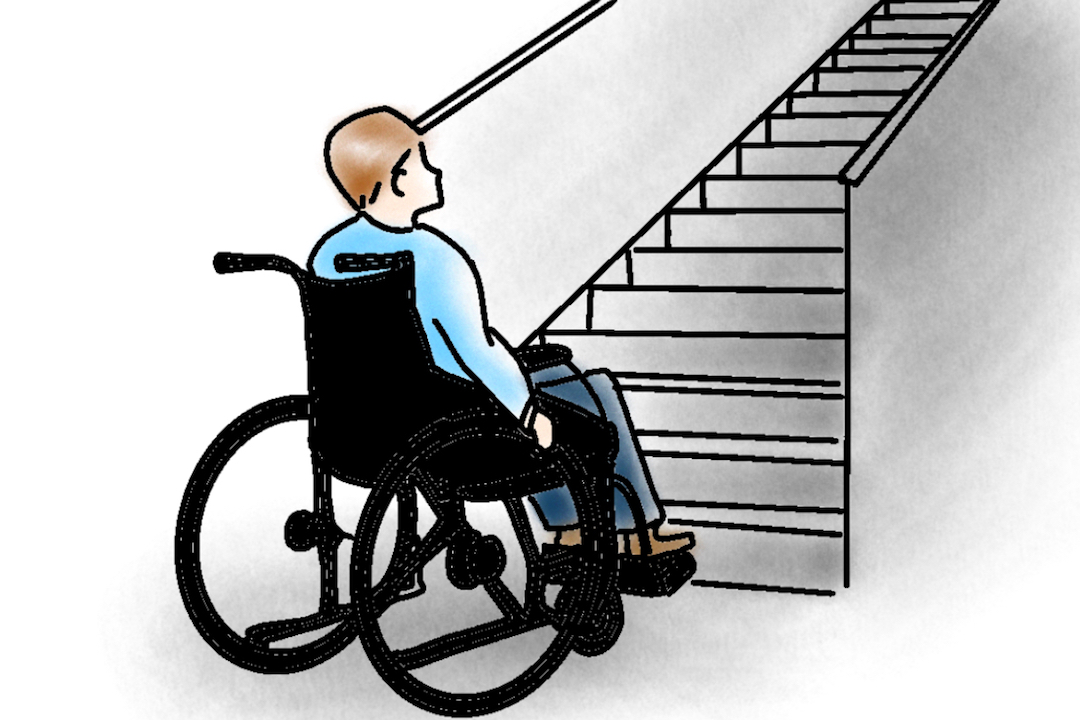Though the pandemic has disrupted many parts of university life, plenty of construction projects have continued on campus. Many of them aim to make the older buildings in downtown Toronto more accessible.
However, ongoing construction can also pose a problem for students with disabilities, and so U of T has provided support for navigating campus when returning to in-person classes.
A more accessible campus
The historic buildings that characterize downtown Toronto have proven to be a challenge for accessibility. The university has undertaken several projects aimed at improving accessibility in response.
According to Ben Poynton, U of T’s Accessibility for Ontarians with Disabilities Act (AODA) officer, the Landmark Project is one example of a crucial step toward making the UTSG campus more accessible by “regrading… the existing landscape.” These changes will include increasing textured paving along the perimeter of King’s Cross Circle to help people with visual impairments and creating an east entry ramp to the Medical Sciences Building.
Poynton wrote in an email to The Varsity that staircases are being replaced with sloped walkways, curbs are being minimized, and accessible parking will be available at ground level and in an underground garage.
The AODA office’s 2020–2021 report also detailed successful construction projects such as the renovation of the William Doo Auditorium in Wilson Hall and the “physically accessible” study spaces in Sidney Smith. Poynton added that the university aims to have “a minimum of one accessible entrance and one accessible washroom” in each building on the UTSG campus.
The university will focus its future funding on improving accessibility in five areas frequently used by students on campus. It has formed a multi-year plan to meet the needs of students with disabilities.
This year, an AODA committee, led by UTSC AccessAbility Services Director Tina Doyle, created new accessibility standards that will address barriers to publicly funded postsecondary education. The AODA office will review current legislative standards, U of T’s standards, and new approaches to “barrier-free design,” which are set to be finalized this year.
Immediate accommodations
U of T has made efforts to accommodate students with disabilities and provide them with information before construction begins. It has also been working to reframe its understanding of disability and to become more accessible to its student body more generally.
In an email to The Varsity, a university spokesperson explained that, in light of the ongoing construction, U of T is trying to keep all means of accessing university buildings open. When that is impossible, it makes sure to provide alternate means of access.
These alternatives, along with the reason for each project and its proposed duration, are posted on U of T’s Faculties and Services website. The spokesperson added that “the university continues to respond to the individual needs of our students and their educational requirements with flexibility and approachability to achieve full participation for everyone.”
The spokesperson also noted that the needs of students with disabilities are diverse and that, consequently, each person’s experiences with online learning has varied.
In an email to The Varsity, Poynton came to a similar conclusion, writing that “Accessibility is about inclusively designing communities, workplaces, learning, research, and teaching environments, and even virtual spaces so that all individuals can participate fully in society by proactively eliminating these barriers.”
U of T specifically focused on getting community members involved in events during this year’s Disability Pride Month in order to “[reframe] disability as a term and as an experience,” and to help U of T reaffirm its commitment to accessibility.


